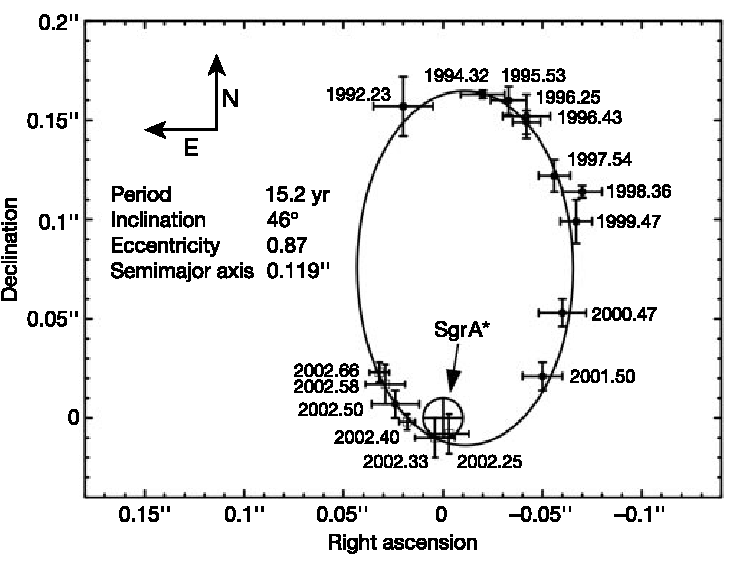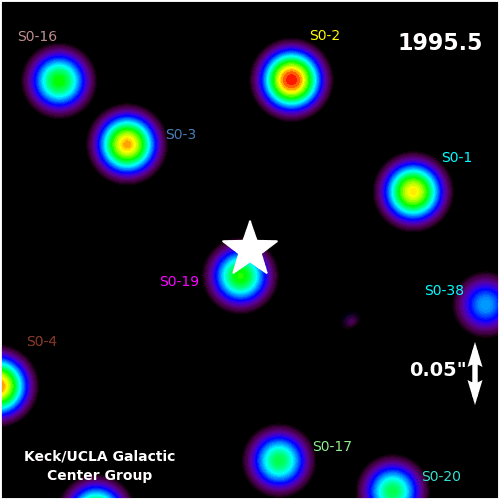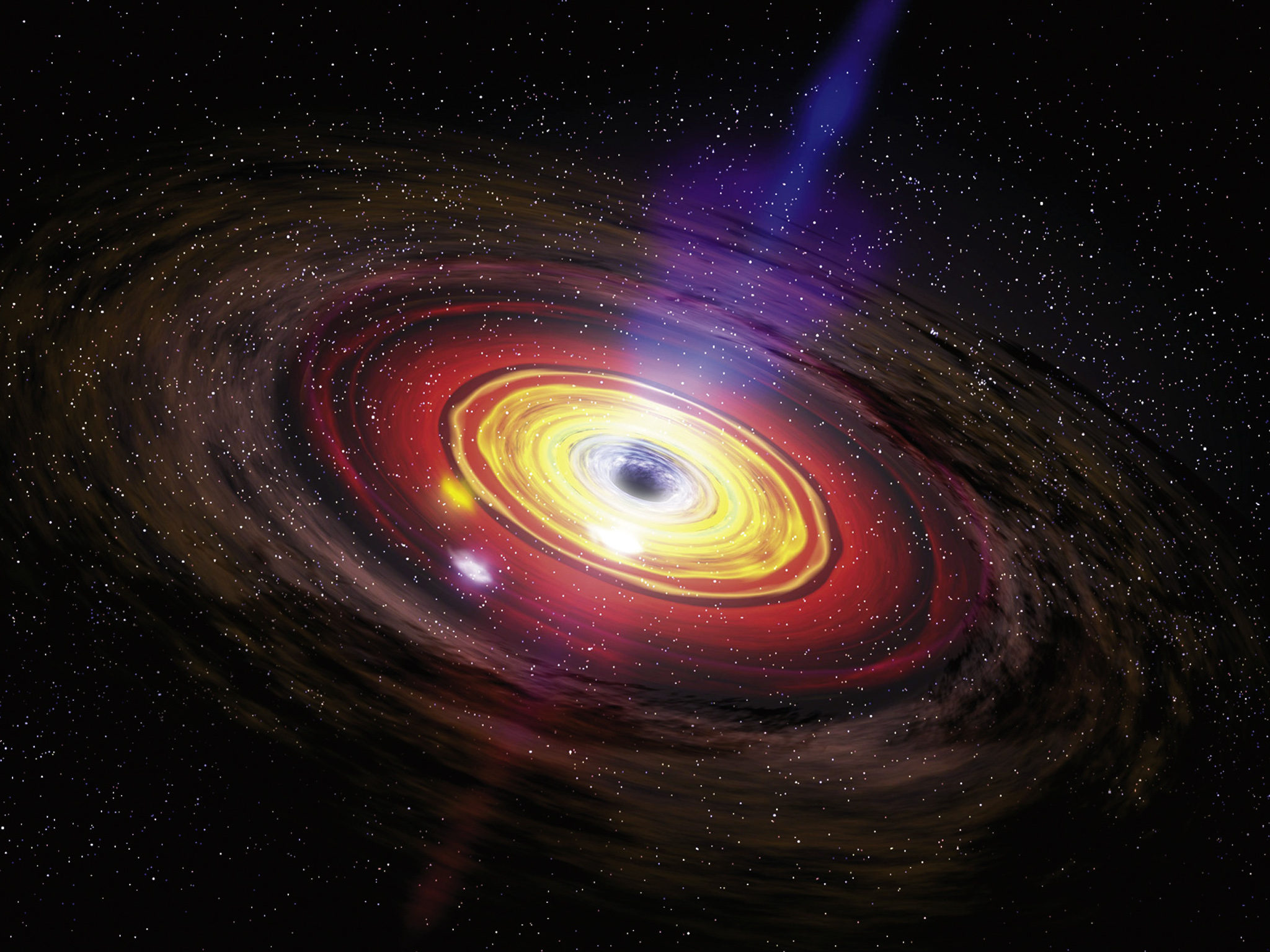
Sgr A* is also an X-ray source, with an X-ray luminosity of ~ 105 Lsun.

Radio InterferometryUsing radio interferometry, we can study the structure of Sgr A* down to a few milliarcseconds. |
 |

But they do change. The stellar velocities rise rapidly in the inner few parsecs. What does this mean?
| Over the past 10 years,
two research groups (Ghez etal;
Eckart etal) have been studying the proper motion of stars at
the galactic center. To detect the transverse motion of
stars 8 kiloparsecs away, some of these stars must be
moving very fast: ~ 1500 km/s!
The velocity dispersion of these stars show a Keplerian falloff (v~1/sqrt(r)) from r=0.01 pc to r=0.1 pc: This argues there is a lot of mass well inside a radius of 0.01 parsecs. |
 |
Actual Keplerian orbits can be derived
for individual stars passing w/in a few hundred AU of the
galactic center (Schodel etal
2002; Ghez etal 2002).

More stars have been tracked since then (from the
UCLA Galactic Center Group):

Keplerian orbits -- object is a point mass (or at least much smaller than the orbit size). In mid-2014, one of the orbiting stars (G2) passed within 130 AU of the central source and remained on a Keplerian orbit.
All this data is consistent with a supermassive black hole at the galactic center with a mass of ~ 4x106 Msun.
|
|
 |